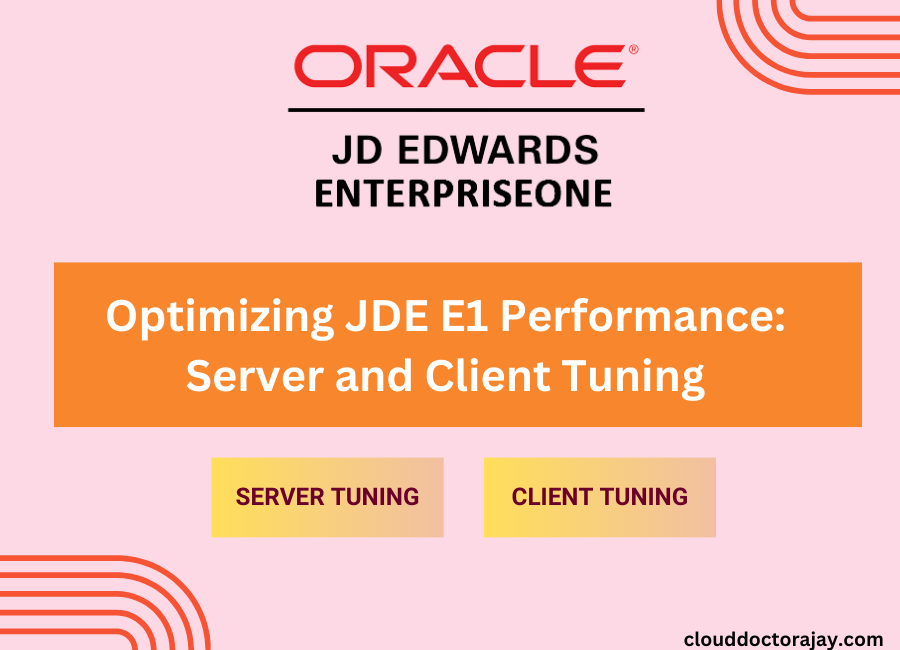Introduction:
JD Edwards EnterpriseOne (JDE E1) is a comprehensive suite of business applications used by organizations to manage various aspects of their operations.
However, as with any complex software system, ensuring optimal performance is crucial to maximize productivity and provide a seamless user experience. In this blog, we will explore server and client tuning techniques to enhance JDE E1 performance.
Server Tuning- JDE E1:
1. Hardware and Infrastructure Enhancements:
– Upgrade server hardware to improve processing power, memory, and disk I/O capabilities.
– Implement load balancing and clustering to distribute the workload and provide fault tolerance.
– Optimize storage performance by using solid-state drives (SSDs) or employing disk striping techniques.
2. Database Configuration:
– Optimize database performance by following vendor recommendations, such as configuring appropriate cache sizes and optimizing query execution plans.
– Regularly analyze and maintain database indexes to ensure efficient data retrieval.
– Partition large tables or indexes to distribute data across multiple disks, enhancing read and write operations.
3. Web Server Configuration:
– Adjust the web server settings (e.g., maximum concurrent connections, session timeouts) based on the number of concurrent users and the system’s computing capacity.
– Enable caching and compression mechanisms to reduce the load on the web server and improve response times.
– Employ reverse proxy servers to offload static content and reduce the web server’s processing load.
Choosing the Right ERP System for Your Business The Ultimate Guide.
Client Tuning:- JDE E1
1. Network Optimization:
– Ensure a stable and high-speed network connection between the client machines and the JDE E1 server.
– Minimize network latency by implementing optimizations like Quality of Service (QoS) settings and traffic prioritization mechanisms.
– Validate network configurations, such as proper DNS resolution and firewall settings, to avoid any bottlenecks in communication.
2. Application Configuration:
– Implement application-level caching to reduce the frequency of round trips to the server.
– Tune JDE E1 caching settings, such as caching modes and timeout values, to align with specific business requirements.
– Review and fine-tune security settings to strike a balance between system performance and data protection.
3. Client System Configuration:
– Update client system hardware (CPU, RAM) to meet or exceed the recommended requirements for running JDE E1.
– Configure antivirus software to exclude JDE E1-related directories from real-time scanning to avoid unnecessary performance overhead.
– Regularly update client machines with the latest patches, drivers, and software updates to ensure compatibility and performance improvements.
Planning and Carrying Out JDE E1 Upgrades: A Smooth Journey
Conclusion:
Optimizing JDE E1 performance through server and client tuning techniques is essential for organizations to maximize their investment in the software and provide a seamless user experience. By implementing hardware and infrastructure enhancements, fine-tuning database and web server configurations, optimizing network connections, and setting up client systems appropriately.
organizations can significantly enhance JDE E1’s performance, leading to improved productivity and overall operational efficiency. Remember to always consult with your IT team or experienced professionals when implementing these tuning techniques to ensure a smooth and successful optimization process.

